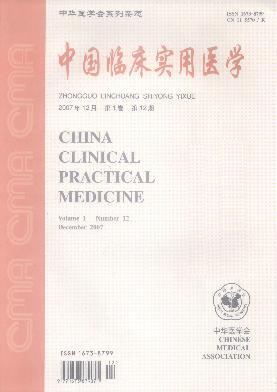3D printing technology in the treatment of traumatic hip fracture with the help of 3D-CT classification
引用次数: 0
Abstract
Objective To evaluate 3D print model and spiral 3D-CT reconstruction parting in hip fracture diagnostic and therapeutic application value. Methods A retrospective study was performed on diagnosis by 3D print model, 3D-CT and X-ray of 46 patients with hip joint fracture.According to the model of 3D printing, X-ray imaging, the 3D-CT imaging data, fracture classification according to the following standards: Type Ⅰ, acetabulum fracture without displacement; Type Ⅱ, acetabulum anterior column and(or)front wall fracture displacement less than 4 mm, column and(or)wall fracture displacement less than 4 mm, top of the acetabulum fracture displacement less than 2 mm; Type Ⅲ, acetabulum anterior column and(or)front wall fracture displacement more than 4 mm, wall column and(or)after fracture displacement more than 4 mm, top of the acetabulum fracture displacement more than 2 mm; Type Ⅳ, double column or T fracture, fracture type central dislocation; Type Ⅴ, acetabulum fracture combination of femoral neck fracture and(or)intra-articular loose bodies, pelvic fractures.Patients with Type Ⅰ and Ⅱ received conservative treatment, such as traction, patients with Type Ⅲ, Ⅳ, Ⅴ received anterior or posterior surgery.All patients were followed up for 6 months on average, and follow-up data was integrity.Harris score method was used to evaluate the function of hip joint. Results There was significant difference between X-ray and 3D model(P=0.012), there was no significant difference between CT and 3D model(P=0.083). Type Ⅰ was 3 cases, Type Ⅱ was 5 cases, Type Ⅲ was 16 cases, Type Ⅳ was 12 cases, Type Ⅴ was 10 cases.According to Harris score, excellent was 35 cases, good was 7 cases, fair was 4 cases, and the excellent and good rate was 91%; there was no significant difference in the long-term excellent and good rate of patients with Type Ⅲ, Ⅳ, Ⅴ(P=0.102, 0.079, 0.059). Conclusion The traditional Jndt and Letoume1 classification process is complicated and the angle has certain limitation, which has not considered the acetabulum weight-bearing area fracture, the joint free bone block as well as the head and neck, the pelvis fracture and so on.Three-dimensional reconstruction spiral CT classification has some guiding significance for the clinical treatment of hip fracture. Key words: Fracture of hip joint; 3D print technology; X-ray; Three-dimensional reconstruction spiral CT3D打印技术在治疗外伤性髋部骨折中的3D- ct分类
目的评价3D打印模型与螺旋3D- ct重建分型在髋部骨折诊断和治疗中的应用价值。方法回顾性分析46例髋关节骨折患者的3D打印模型、3D- ct及x线诊断。根据3D打印模型、x线成像、3D- ct成像数据,骨折分类按以下标准进行:Ⅰ型,髋臼骨折无移位;Ⅱ型,髋臼前柱和(或)前壁骨折位移小于4mm,柱和(或)前壁骨折位移小于4mm,髋臼顶部骨折位移小于2mm;Ⅲ型,髋臼前柱和(或)前壁骨折位移大于4mm,髋臼前柱和(或)后壁骨折位移大于4mm,髋臼顶部骨折位移大于2mm;Ⅳ型,双柱或T型断裂,断裂型中心位错;Ⅴ型,髋臼骨折合并股骨颈骨折和(或)关节内松体,骨盆骨折。Ⅰ、Ⅱ型患者行保守治疗,如牵引,Ⅲ、Ⅳ、Ⅴ型患者行前路或后路手术。所有患者平均随访6个月,随访资料完整。采用Harris评分法评价髋关节功能。结果x线与3D模型的差异有统计学意义(P=0.012), CT与3D模型的差异无统计学意义(P=0.083)。Ⅰ型3例,Ⅱ型5例,Ⅲ型16例,Ⅳ型12例,Ⅴ型10例。Harris评分优35例,良7例,一般4例,优良率为91%;Ⅲ、Ⅳ、Ⅴ型患者的远期优良率与远期优良率比较差异无统计学意义(P=0.102、0.079、0.059)。结论传统Jndt和Letoume1分类过程复杂,角度有一定局限性,未考虑髋臼承重区骨折、关节游离骨块以及头颈、骨盆骨折等。三维重建螺旋CT分型对髋部骨折的临床治疗具有一定的指导意义。关键词:髋关节骨折;3D打印技术;x射线;三维重建螺旋CT
本文章由计算机程序翻译,如有差异,请以英文原文为准。
求助全文
约1分钟内获得全文
求助全文

 求助内容:
求助内容: 应助结果提醒方式:
应助结果提醒方式:


